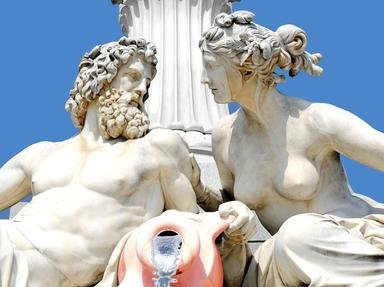Quiz Answer Key and Fun Facts
1. From the name of which Roman god is the word "volcano" derived?
2. The Greeks had a counterpart to the Roman god of fire. What was his name?
3. The Hawaiian goddess of fire is said to live in the volcano Kilauea. Who is she?
4. This volcano, which erupted violently in May 1980, has the Native American name of Louwala-Clough.
5. This Japanese volcano's name derives from a word meaning "fire" or "deity of fire"; Mt _____.
6. According to legend, this Mexican volcano is supposedly a warrior holding a smoking torch, standing guard over the body of the woman he loves.
7. The volcanic island of Surtsey was named after a god of fire from which mythology?
8. Legend has it that this island was destroyed by a massive volcanic eruption/earthquake/tidal wave as punishment by the gods because its people were becoming too greedy and self-absorbed.
9. The native people of this region believed that the peaks of its volcanoes were inhabited by mountain spirits called gomuls.
10. A Filipino legend tells that this mountain concealed a father weeping for his dead daughter.
Source: Author
NatalieW
This quiz was reviewed by FunTrivia editor
Bruyere before going online.
Any errors found in FunTrivia content are routinely corrected through our feedback system.

